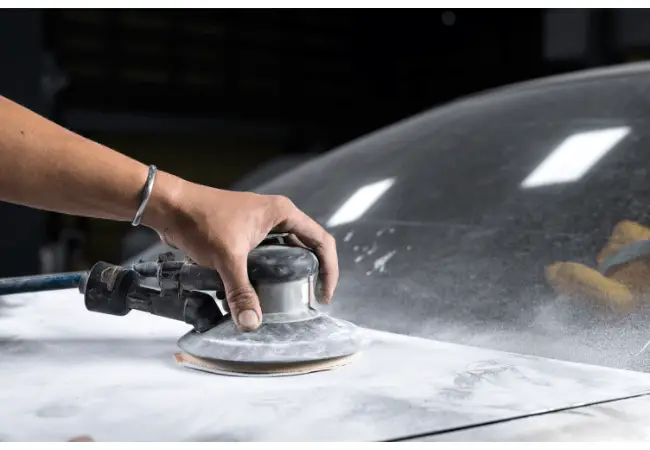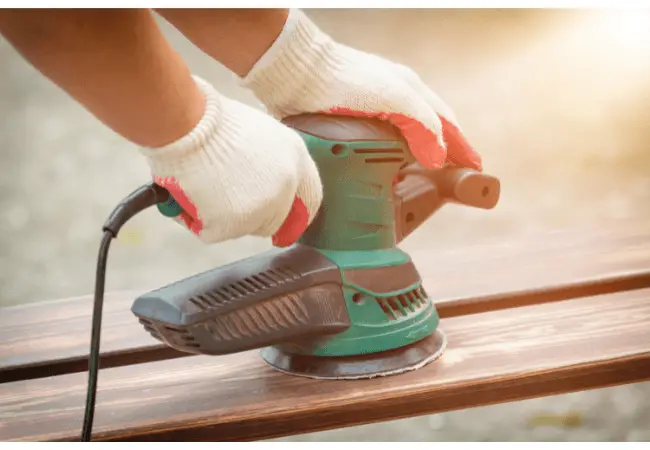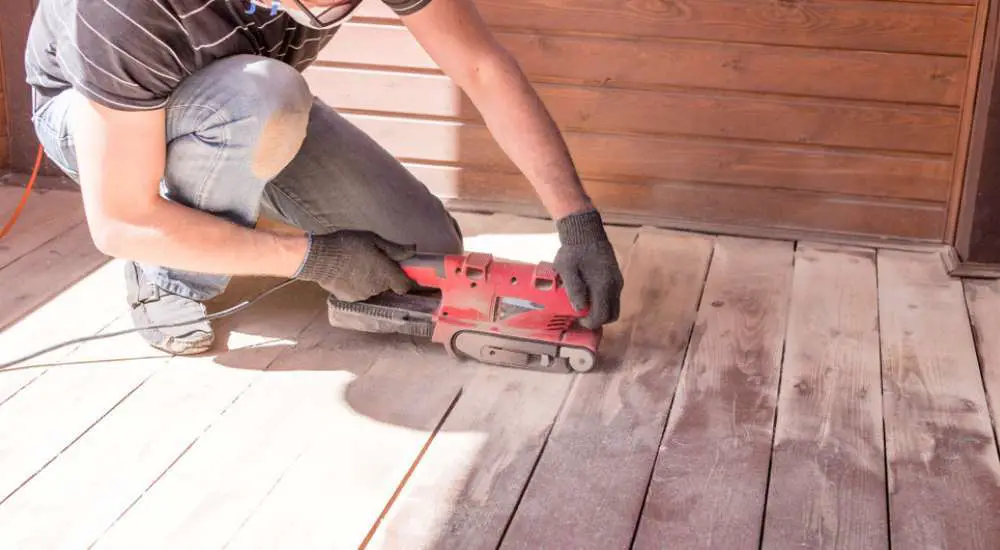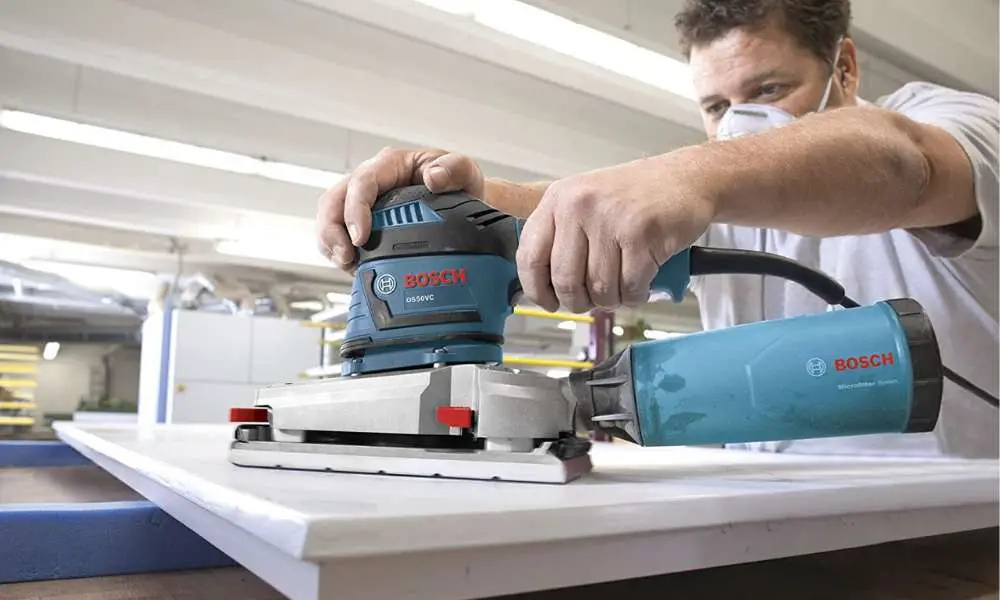A random orbital sander is a versatile and essential power tool often found in the workshops of DIY enthusiasts and professional woodworkers alike. These sanders are used for a variety of tasks, such as prepping surfaces, sanding off paint and varnish, shaping wood and plastic, and even polishing and removing rust from metal. They offer a smooth and swirl-free finish while minimizing the risk of sanding marks, making them perfect for working on multiple materials and intricate projects.
Random orbital sanders work by utilizing a combination of oscillation and rotation to create an unpredictable sanding pattern, which leads to an even and scratch-free surface. They were developed as an improvement over standard orbital sanders and are popular for their ability to quickly remove material while simultaneously preventing cross-grain scratches in the workpiece. These sanders come in various sizes, power levels, and features that can cater to different needs and preferences of users.
Contents
- 1 Function and Purpose
- 2 Types of Random Orbital Sanders
- 3 Key Features to Consider
- 4 Safety and Operating Tips
- 5 Maintenance and Care
- 6 Popular Applications
- 7 Frequently Asked Questions
- 7.1 How is a random orbital sander typically used in woodworking projects?
- 7.2 What are the primary functions of a random orbital sander in surface finishing?
- 7.3 What advantages does a random orbital sander offer over a traditional orbital sander?
- 7.4 In what scenarios is a random orbital sander preferable to a palm sander for furniture work?
- 7.5 What features should one consider when choosing the best random orbital sander for home use?
- 7.6 Can a random orbital sander be used for both coarse material removal and fine polishing tasks?
Key Takeaways
- Random orbital sanders provide a smooth, swirl-free finish on a variety of materials
- They work through a combination of oscillation and rotation, resulting in even and scratch-free surfaces
- Different sizes and features are available to accommodate various user needs and project types
Function and Purpose

Sanding Surfaces
A random orbital sander is a versatile power tool primarily used for prepping surfaces by sanding off paint, varnish, or smoothing out rough spots on wood and plastic materials. This tool works by utilizing a round sandpaper pad mounted on a metallic disc, which is then attached to a high-torque motor. The movement of the sander is both circular and random, which helps prevent scratches and provides a smooth finish. Some common applications of this tool are:
- Woodworking: Fine-tuning and shaping wood pieces in furniture-making
- Plastic: Creating smooth surfaces on plastic materials, like in automotive and household items
- Metal: Polishing and removing rust or scratches from metallic surfaces
Finishing Touch
One of the essential purposes of using a random orbital sander is to provide a finishing touch to surfaces during various stages of a project. When working with wood, it is crucial to have a smooth and even finish, which cannot be achieved using only manual sanding techniques. The random orbital sander offers:
- Efficiency: It significantly reduces the time and effort needed compared to manual sanding
- Uniformity: The random movement of the sanding pad creates a more consistent finish without leaving swirl marks
- Versatility: The sander can be used with different grits of sandpaper to adjust the level of smoothness
Preparing for Paint
Random orbital sanders are also highly effective in preparing surfaces for paint by removing old paint layers or smoothing out new molding. They can be used on various materials such as wood, metal, and composites like solid-surface countertops. The key benefits of using a random orbital sander for paint preparation include:
- Clean surface: The sander ensures that the surface is free from dust, dirt, and old paint, which helps the new paint adhere better
- Even texture: A smooth surface allows for better paint application, contributing to a professional-looking finish
- Time-saving: The power tool speeds up the process compared to manual sanding, improving project efficiency
Types of Random Orbital Sanders
Random orbital sanders are versatile tools that can be used for various tasks such as prepping surfaces, sanding off paint and varnish, and removing rust from metal. They come in a few different types, each with its own advantages and disadvantages. In this section, we will discuss electric sanders, pneumatic sanders, and the differences between corded and cordless sanders.
Electric Sanders
Electric sanders are the most common type of random orbital sander available. They use electric motors to power the sanding pad, making them suitable for a wide range of woodworking and metalworking tasks. Some benefits of electric sanders include:
- Ease of use: Simply plug the sander into an outlet, and it’s ready to go.
- Power: Many electric sanders offer variable speed settings, allowing you to adjust the sanding power according to the needs of your project.
- Accessibility: You can easily find electric sanders at most hardware stores and online retailers.
Pneumatic Sanders
Pneumatic sanders, also known as air-powered or air sanders, use compressed air to power the sanding pad. These sanders are popular among professionals due to their high power output and efficiency. Some advantages of pneumatic sanders are:
- Higher power output: Pneumatic sanders typically provide a higher power output than electric sanders, making them ideal for heavy-duty tasks.
- Lightweight: They are generally lighter than electric sanders, reducing user fatigue over extended periods of use.
- Durability: Pneumatic sanders often have fewer moving parts, which can result in increased durability and longer tool life.
*However, it’s worth noting that you will need an air compressor to operate a pneumatic sander.
Corded vs. Cordless
Both electric and pneumatic random orbital sanders can be found in corded and cordless varieties. Each type has its own set of advantages and disadvantages.
- Corded Sanders: These sanders are connected directly to a power source, providing consistent power throughout the entire sanding process. They are generally more powerful than cordless models, and you don’t need to worry about battery life. However, the cord can be limiting in terms of mobility and may require an extension cord for larger workspaces.
- Cordless Sanders: Battery-powered cordless sanders offer the advantage of increased mobility, allowing you to work without being tethered to an outlet or air compressor. They are especially useful for outdoor projects or workspaces without easy access to power sources. However, you may need extra batteries for longer projects, and their power output may be slightly lower compared to corded models.
In conclusion, choosing the right type of random orbital sander largely depends on your specific needs, budget, and the nature of the projects you will be working on. Consider factors such as power source, mobility, and intended use when selecting a sander for your workshop or job site.
Key Features to Consider
When selecting a random orbital sander for your projects, there are some key features to consider to ensure you choose the right one for your specific needs. In this section, we will discuss three important aspects: Variable Speed Control, Dust Collection Systems, and Disc Size and Attachments.
Variable Speed Control
Variable speed control is a crucial feature in a random orbital sander, as it allows you to adjust the sanding speed according to the material or task at hand. This enables you to achieve the optimal finish, whether you’re working on wooden furniture or metal projects. Look for a sander that offers a wide range of adjustable speeds to ensure maximum versatility.
Dust Collection Systems
A quality dust collection system is essential for maintaining a clean and safe workspace and prolonging the life of your sander. Many random orbital sanders come equipped with built-in dust collection bags or can be connected to shop vacuums. Consider the type and size of the dust collection system and ensure that it’s easy to use and maintain. A good dust collection system not only makes cleaning up after sanding more manageable but also helps improve air quality and visibility, making it a crucial feature to consider.
Disc Size and Attachments
Random orbital sanders are available in various disc sizes, typically ranging from 5 to 6 inches. The choice of disc size depends on your specific needs – larger discs cover more surface area, making them ideal for bigger projects but can be harder to control for detail work. On the other hand, smaller discs offer greater precision and are better suited for smaller surfaces and tight spaces.
In addition to disc size, consider the types of attachments available for your sander. Some random orbital sanders come with interchangeable pads for different sanding applications, while others can accommodate various sandpaper types, making them more versatile. Make sure to choose a random orbital sander that allows you to easily switch between attachments and sandpaper to optimize your sanding process.
By taking into account variable speed control, dust collection systems, and disc size and attachments, you can confidently choose the right random orbital sander for your projects, ensuring a smooth and efficient sanding experience.
Safety and Operating Tips

Proper Handling
When using a random orbital sander, it is crucial to maintain a firm grip and keep the sander flat on the surface to avoid uneven sanding or scratching. Applying excessive pressure is not recommended, as it can reduce the sander’s efficiency and may cause damage to the workpiece. Move the sander slowly and evenly across the surface for the best results. Avoid tilting, rocking, or lifting the sander, as this can also leave marks that are challenging to fix later. It is essential to allow the sander to reach full speed before placing it on the surface to prevent gouging or uneven sanding.
Personal Protective Equipment
Wearing the appropriate safety gear is essential when using a random orbital sander. A mask that forms a tight seal around the nose and mouth is crucial, as these sanders generate a significant amount of dust. Eye protection is also necessary to prevent dust or debris from potentially causing irritation or injury. In addition, wear hearing protection, especially when working for extended periods, as these tools can be quite loud. Appropriate clothing, such as long sleeves and gloves, may be helpful in protecting against abrasions and cuts while working.
Workspace Preparedness
Preparing the workspace contributes to the safe and efficient operation of a random orbital sander. Ensure that the area is well-lit and free from clutter that may cause accidents or impede your ability to maneuver. Use a model with built-in dust control if possible, which helps to improve visibility and air quality. Always unplug the sander when changing sandpaper or making adjustments to avoid accidental starts and potential injuries. Finally, secure the workpiece to a steady workbench or clamps to prevent it from moving around during sanding.
Maintenance and Care
Cleaning
Regular cleaning of your random orbital sander is crucial to keep it in good working condition. Be sure to unplug the sander before cleaning. Use a soft brush or a can of compressed air to remove dust and debris from the motor housing, vents, and other components. It is essential to clean the dust collection system as well, including the filter or dust bag. You may need to remove the dust bag and filter and shake it out or use a vacuum cleaner to clean them effectively.
Replacing Pads and Disks
To maintain optimal performance, replace worn-out sanding pads and disks. Observe the condition of the sanding pad and look for any signs of wear, unevenness, or damage. Most random orbital sanders feature a hook-and-loop system for easy pad replacement, simply pull off the old pad and attach the new one. As for the sanding disks, replace them when they become clogged or worn. To do this, remove the old disk by peeling it away from the pad and attaching a new one according to the sander’s specifications such as the appropriate grit for the task at hand.
Storage and Handling
Proper storage and handling are essential in ensuring the longevity of your random orbital sander. Store the sander in a dry, cool, and well-ventilated space, away from direct sunlight and moisture. It is a good practice to store your sanding disks separately in a dry and flat area to prevent them from warping. When handling the sander, always use both hands for better control and to reduce the risk of injury. Additionally, wrap the power cord neatly around the sander’s handle or use a cord organizer to prevent tangling or damage to the cord.
By following these maintenance and care tips, your random orbital sander will remain in good working condition, ensuring optimal performance and an extended lifespan.
Popular Applications
Woodworking Projects
Random orbital sanders are perfect for a variety of woodworking projects. They are excellent for:
- Prepping surfaces: Smoothing out rough wood before applying paint or finish
- Removing paint and varnish: Stripping off old layers to make way for new finishes
- Shaping wood: Creating contours and shaping edges for a professional look
Auto Body Work
Auto body work often involves repairing and prepping surfaces. Random orbital sanders can be a valuable tool for:
- Sanding filler: Evening out filler used to repair dents and imperfections
- Removing rust: Getting rid of surface rust to prevent further degradation before painting
- Preparing for paint: Scuffing paint to promote adhesion of the new coat
Metal Fabrication
In metal fabrication processes, random orbital sanders offer versatility in polishing and finishing tasks. Some primary uses are:
- Deburring: Removing sharp edges and burrs from metal pieces after cutting
- Removing rust: Eliminating rust from metal surfaces before applying a protective coating
- Polishing: Creating a smooth, polished finish on metal projects for aesthetics or improving functionality
With these applications in mind, random orbital sanders provide a valuable tool for woodworking, auto body work, and metal fabrication alike.
Frequently Asked Questions
How is a random orbital sander typically used in woodworking projects?
A random orbital sander is commonly used in woodworking projects for tasks such as prepping surfaces, sanding off paint and varnish, shaping wood and plastic, and fixing imperfections in joinery. It is effective for creating a smooth and even surface, particularly on larger pieces or surfaces that are difficult to reach manually. Learn more
What are the primary functions of a random orbital sander in surface finishing?
The main functions of a random orbital sander for surface finishing involve sanding and polishing wood, metal, and composite materials. They enable the removal of paint, varnish, or other coatings and the smoothing of imperfections in the surface, preparing it for further finishing or treatment. Find out more
What advantages does a random orbital sander offer over a traditional orbital sander?
A random orbital sander provides a smoother, more consistent finish than a traditional orbital sander. Due to its random movement pattern, it minimizes the chance of leaving sanding marks or finish imperfections, creating a more uniform surface. This makes it a preferred choice for a range of woodworking and surface finishing tasks. Read more
In what scenarios is a random orbital sander preferable to a palm sander for furniture work?
When working on furniture, a random orbital sander is often preferred over a palm sander for tasks that require fast and efficient material removal or a superior, swirl-free finish. Its random orbital motion allows for better results on curved or intricate surfaces and is better suited for aggressive material removal tasks. Discover more
What features should one consider when choosing the best random orbital sander for home use?
Key features to consider when selecting a random orbital sander for home use include power, speed, dust collection, ergonomics, and user-friendly design. Important aspects like a variable speed control, comfortable grip, easy-to-use controls, effective dust collection, and a suitable motor should be evaluated before making a decision. Get more information
Can a random orbital sander be used for both coarse material removal and fine polishing tasks?
Yes, a random orbital sander can be used for both coarse material removal and fine polishing tasks when equipped with the appropriate sandpaper. Coarser grits, typically in the range of 40-80 grit, are suitable for material removal. Finer grits, often between 180 and 320 grits, can be used for polishing and finishing operations. Learn more




Leave a Reply